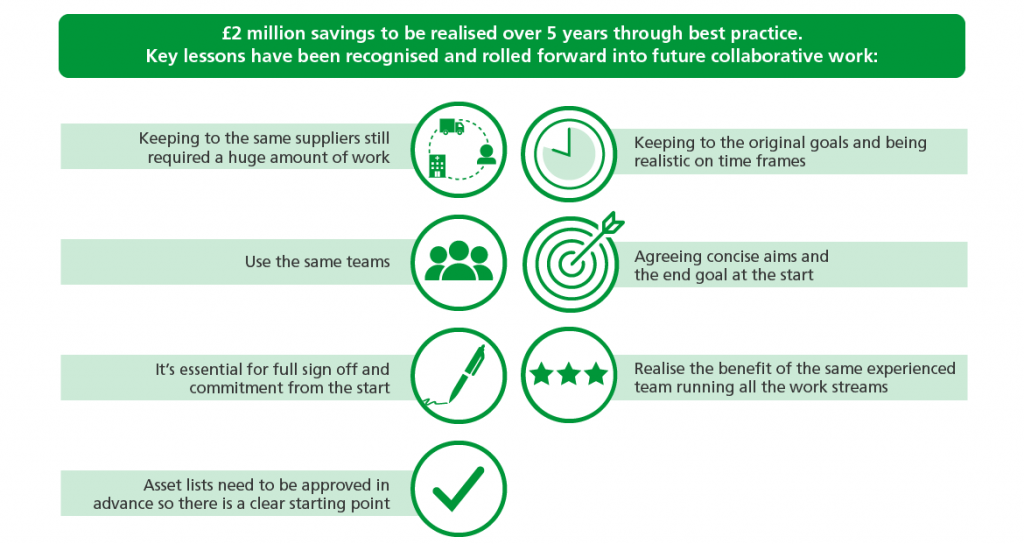A Collaborative Approach To Capital Maintenance Delivers Savings For Devon STP
Because of the initial project, further collaborative opportunities have come about and there has been a change in culture across the trusts with buyers having STP working in mind at all times. Working with the team at NHS Supply Chain has been a pleasure.
Darren Proctor
Head of Procurement, Northern Devon Healthcare NHS Trust.
Overview
Devon’s Sustainability and Transformation Plan (STP) is the local implementation of the national strategy and it supports the six core NHS priorities with aims to transform health and care services for local people, so they are fit for the future.
Organisations within Devon’s STP footprint (and beyond) that formed the working group were University Hospitals Plymouth NHS Trust, Royal Devon and Exeter NHS Foundation Trust, Devon Partnership NHS Trust, Northern Devon Healthcare NHS Trust, Livewell Southeast, Torbay and South Devon NHS Foundation Trust and Taunton and Somerset NHS Foundation Trust.
The catalyst for change, was a meeting the STP held with NHS Supply Chain, in which it was recognised that while capital is not a Cost Improvement Programme (CIP), capital maintenance can be. With over £6 million annual spend having been identified on capital maintenance, there was a significant appetite to do things differently.
The Challenge
Improving capital maintenance management and delivering savings
The £6.1 million annual spend on capital maintenance was spread across 32 suppliers; all the trusts used original equipment manufacturers (OEM) with multiyear or single year contracts that automatically renewed but on different terms, varying benefits and with different pricing structures. Each trust recognised that while they had limited negotiating power as individuals, their needs however, were very similar.
The Solution
A collaborative approach to maintenance procurement
Working in partnership with NHS Supply Chain: Large Diagnostic Capital Equipment including Mobile and Services, Terms of Reference were quickly established that made sure the right people and teams were involved throughout the project process with clear and concise aims agreed at the start.
Process Undertaken
A focus on commitment
The majority of the annual spend was with just four suppliers and a key objective was to retain these same suppliers, but through commitment, obtain a better contract.
A lead trust was allocated to each supplier and a supplier day was held to explain the purpose of the project. The same team developed the aims and objectives for the project against realistic timelines for delivery.
The Result: £2 million savings to be realised over 5 years through best practice

Key lessons have been recognised and rolled forward into future collaborative work:
- Keeping to the same suppliers still required a huge amount of work
- Use the same teams
- It’s essential for full sign off and commitment from the start
- Asset lists need to be approved in advance so there is a clear starting point
- Keeping to the original goals and being realistic on time frames
- Agreeing concise aims and the end goal at the start
- Realise the benefit of the same experienced team running all the work streams.
Next Steps
A work plan to deliver further savings
Phase 1: Anaesthetic machine procurement
Phase 2: Endoscopy maintenance contracting
Phase 3: Bladder Scanner machine procurement.
Future projects scoped also include radiology reporting.
Contact
If you’d like to understand how we can support your trust to deliver capital maintenance savings through collaboration, please speak to your NHS Supply Chain: Large Diagnostic Capital Equipment Account Manager.
Useful Links
-
Account Managers
Find contact details of our Account Management team here.
-
Maintenance, Repair and Calibration of Medical Equipment framework
The framework agreement for the Maintenance, Repair and Calibration of Medical Equipment.
